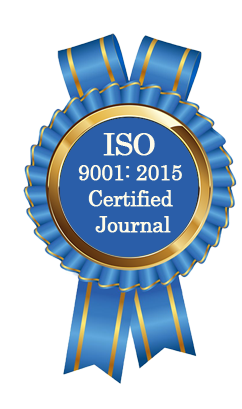| All | Since 2020 | |
| Citation | 105 | 60 |
| h-index | 4 | 4 |
| i10-index | 3 | 2 |
WJAHR Citation 
Login
News & Updation
Best Article Awards
World Journal of Advance Healthcare Research (WJAHR) is giving Best Article Award in every Issue for Best Article and Issue Certificate of Appreciation to the Authors to promote research activity of scholar.
Best Article of current issue
Download Article : Click here
Indexing
Abstract
PLACENTAL THICKNESS AS AN ADDITIONAL PARAMETER FOR GESTATIONAL AGE ESTIMATION IN NORMAL SINGLETON PREGNANCIES
*Dr. T. Rosalind and Dr. A. Vaseela Banu
ABSTRACT
Introduction: Accurate estimation of gestational age is an important part of any obstetric examination and presently the most efficient way to date pregnancy is by the use of ultrasonography. There are several sonographically derived parameters like biparietal diameter, head circumference, femur length and abdominal circumference to date pregnancy, but even together their accuracy gets reduced with advancing gestation. Hence additional parameters are needed to supplement them to derive at a gestational age with more precision. The purpose of the present study of is ultrasonographically measuring placental thickness at the level of umbilical cord insertion site and assessing the relationship of placental thickness with gestational age and also to assess the growth pattern of the placenta with advancing gestational age. Methodology: 200 antenatal mothers attending the antenatal OPD at Tirunelveli Medical College with singleton normal pregnancies with no risk factors were included in the study. After taking a detailed history and ruling out risk factors the antenatal women were examined for placental thickness and gestational age. The placental thickness in mm was measured at the level of the cord insertion site. All placental measurements were taken during the relaxed phase of the uterus as contractions could spuriously increase the placental thickness. Results: In our study we found that there existed a linear relationship between the placental thickness with advancing gestational age. there was also a linear correlation between placental thickness with other ultrasonographically derived parameters which have been used for determining gestational age, thereby concluding that it could be used as an additional parameter for determining gestational age. there was no age specific or parity specific distribution of the placental thickness. there was a majority of anterior implantation site of the placenta among the study population. laterally implanted placentas had maximum thickness. there also existed a linear correlation between placental thickness and estimated fetal weight. Conclusion: Sonographic measurement of the placental thickness which is measured at the site of umbilical cord insertion has been found to be a simple and clinically useful method. This helps in diagnosing the placental anomalies that can significantly affect the management and outcome of pregnancy. Besides determining the gestational age it could also be used as a predictor of low birth weight, fetal growth restriction and hydrops fetalis Henceforth we conclude that placental thickness could be used as an additional parameter for gestational age estimation along with the additional parameters from 14-40wks of gestation wherein the duration of pregnancy is unknown or uncertain.
[Full Text Article] [Download Certificate]
